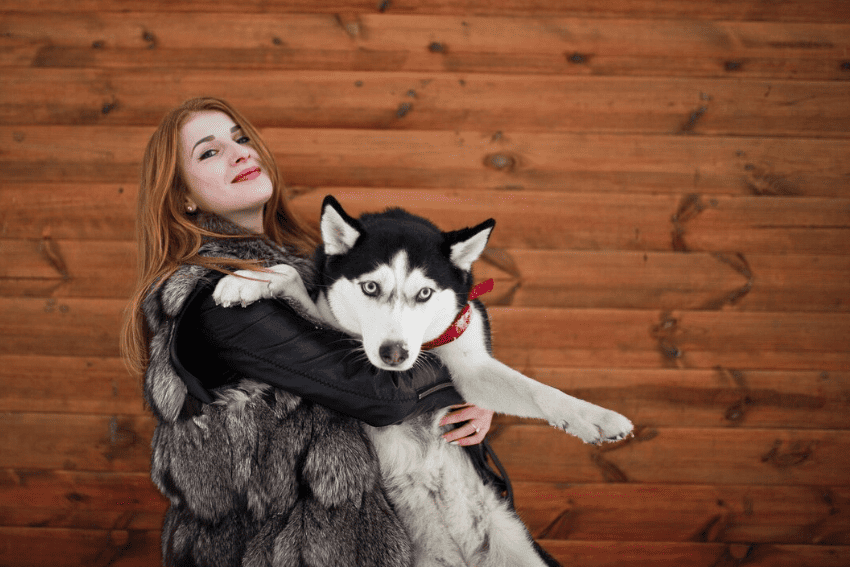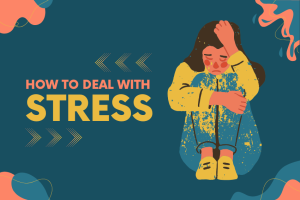Husky shedding is an inevitable reality for anyone who shares their life with a Siberian Husky. Never fear, you are not alone should you have ever found your house coated in a fluffy blanket of fur or worried about whether or not your vacuum cleaner was plotting a mutiny. The very same beautiful double coats that render huskies so majestic also ensure that they are shedding machines, especially when they are in their twice-yearly contagion seasons, which are aptly referred to as the blowout days. Nevertheless, never despair!

This comprehensive guide is your ultimate resource for conquering husky shedding. It is loaded with useful tools, tips that you can immediately use, and cleaning tricks to keep your home habitable and your husky in good coat condition. Let’s dive into the fur-flying world of husky shedding and come out victorious.
Understanding Husky Shedding: Why It Happens
Siberian Huskies are arctic dogs; their double coat is an inspired act of nature. The thick, soft undercoat is then trapped with warmth and the longer coarser guard hairs cushion against wind, snow, and UV rays. The coat is a savior in severe climatic conditions but bother in your living room.
Husky shedding ramps up twice a year—spring and fall—during what owners affectionately (or exasperatedly) call the “blowout.” The extraordinary shedding of huskies during such periods aims at preparing them to face new changes of temperature during specific seasons. Other than blowouts, they naturally shed in moderate proportion throughout the year as a component of their natural hair cycle.
Why should this interest you? Understanding the biology behind husky shedding helps you approach it with patience and strategy. It does not only matter in terms of beauty; a healthy coat will keep your husky comfortable and secure. Other factors can have a bearing on intensity including diet, stress, health status and grooming habits and therefore we will provide you with the tools and know how to control this.
The Ultimate Toolkit for Husky Shedding
To tackle husky shedding, you need a well-stocked arsenal. Husky owners and professional groomers have tested these tools, and they will help you spend less time on grooming and make this process less stressful to both you and your pet. The following is what you will need:
Undercoat Rake
Your best friend during blowout season would be an undercoat rake. Its broad and curved teeth plunge right into the undercoat and pluck loose hair, without stressing the topcoat.
Why It Works: It targets the source of heavy shedding—the undercoat—without irritating your husky’s skin.
Pro Tip: Use short, gentle strokes in the direction of hair growth. Start at the back and work forward to avoid overwhelming your dog. Recommended brands: Safari or Oster.
Deshedding Brush (e.g., FURminator)
The FURminator and similar deshedding brushes are game changers for husky shedding. Their dimensions are such that they help to brush out loose undercoat fur, but leave guard hair alone.
Why It Works: It cuts through dense fur like a hot knife through butter, reducing shedding by up to 90% with regular use.
Pro Tip: Limit sessions to 10-15 minutes to avoid overgrooming, which can irritate the skin. Use a light touch and reward your husky with treats.
High-Velocity Pet Dryer
A high-velocity dryer isn’t only a show-dog showpiece; it is also a secret weapon of husky owner. It rids itself of loose fur, dander and dirt before they reach your floor.
Why It Works: It’s faster than brushing alone and perfect for blowout season when fur is falling in clumps.
Pro Tip: Start on a low setting to acclimate your husky to the noise. Hold the nozzle 6-8 inches from their coat to avoid discomfort. Try the Flying Pig or K-9 III dryers.
Slicker Brush
Slicker brushes are great to maintain on a day-to-day basis, as they smooth out the topcoat and collect the loose hair. They also work well in removing small mats.
Why It Works: They keep the coat shiny and prevent small tangles from becoming big problems.
Pro Tip: Pair with a dog-safe detangling spray for stubborn knots. Brush lightly to avoid scratching the skin.
Pet Vacuum Attachment
A pet-vacuum accessory also allows you to suck up loose fur, right out of your husky. Not all dogs, but they are saviors to heavy shedders.
Why It Works: It reduces airborne fur and keeps your home cleaner.
Pro Tip: Introduce it gradually with treats to make it a positive experience. The Dyson Pet Grooming Tool is a solid choice.
Lint Rollers and Furniture Brushes
They are your fur flying departure department when it escapes your dog. Have lint rollers in all the rooms and a rubber-bristled furniture brush to sit on couches and car seats.
Why It Works: They’re quick, portable, and effective for daily touch-ups.
Pro Tip: Buy in bulk—trust us, you’ll go through them fast.
Grooming Gloves
Grooming gloves are the painless option to brush for husky dogs that detest brushing. They act as though they are petting and removing loose fur.
Why It Works: They’re less intimidating and great for sensitive areas like the face or legs.
Pro Tip: Use a damp glove for extra fur-grabbing power.
It pays to buy good quality tools to save time and hassle. Brushes that break easily or rub your husky’s skin are cheap and will waste your money and cause more discomfort to your pet. A strong toolkit is the foundation of any husky shedding plan.
Top Tips for Controlling Husky Shedding
The equipment is not the best part of the equation; strategy is the most important one. These years of experience that husky owners have passed down to us in the form of a few simple tips will help you to stay ahead of the fur.
Brush Regularly, Especially During Blowouts
Daily brushing is non-negotiable during spring and fall blowouts, when husky shedding hits its peak. During other seasons, shoot to do 2-3 sessions per week. Pay special attention to heavy shedding parts of the body such as the back, sides, tail, and hindquarters since the fur is likely to get clump.
Why It Helps: Regular brushing removes loose fur before it spreads, reduces mats, and distributes natural oils for a healthy coat.
How to Do It: Set up a 10 to 15 minutes grooming session in a distraction-free area. Use an undercoat rake or deshedding brush for blowouts and a slicker brush for maintenance.
Bathe Sparingly but Strategically
Huskies do not need to be bathed often since they are self-clean and have low odor coats. Excessive bathing may be able to remove natural oils which can cause dry skin and even more loss of skin. Target 2-3 months or to rest those blowouts to loosen out the dead fur away by bathing.
Why It Helps: A bath softens the undercoat, making it easier to remove with a dryer or brush.
How to Do It: Use a dog-specific shampoo (like TropiClean or Burt’s Bees) and lukewarm water. Follow with a high-velocity dryer to blow out loose fur.
Use a High-Velocity Dryer Post-Bath
Your secret weapon, after a bath, is a pet dryer. It removes loose fur and dries the coat very fast and thus does not allow the fur to become matted due to dampness.
Why It Helps: It reduces shedding and keeps your husky comfortable.
How to Do It: Work in sections, starting at the back. Keep the nozzle moving to avoid overheating any spot. Reward your husky with treats to make it fun.
Feed a Coat-Healthy Diet
A balanced diet is critical for managing husky shedding. Diets containing high levels of omega 3 and 6 fatty acid (such as salmon or flaxseed-based kibble) lubricate the skin and limit excessive shedding.
Why It Helps: Proper nutrition strengthens hair follicles and minimizes breakage.
How to Do It: Choose high-quality dog food with fish oil or add a vet-approved supplement. Consult your vet about personal recommendations.
Stay on Top of Flea and Tick Prevention
Due to scrying due to parasites such as flea and ticks, the shedding becomes even more, and the skin becomes irritated. Prevention must be year-round particularly if your husky goes outside.
Why It Helps: It prevents skin issues that amplify shedding.
How to Do It: Use vet-recommended treatments like Frontline, NexGard, or Seresto collars. Check your husky coat regularly for signs of pests.
Vacuum and Clean Daily
Husky shedding means fur on every surface—couches, carpets, clothes, you name it. It has to have a great vacuum with a HEPA filter and cleaning needs to be done on a daily basis to keep the mess in bounds.
Why It Helps: It traps fur and dander, improving air quality and reducing allergies.
How to Do It: Vacuum high-traffic areas daily and wash your husky’s bedding weekly. Keep lint rollers and furniture brushes handy for quick touch-ups.
Build a Consistent Grooming Routine
Your best friend would be consistent. The most effective remedy is to ensure regular grooming which may entail a daily grooming schedule during a blowout and 2-3 times per week at other times to prevent fur build up. Not only does this avoid a buildup of fur but it also makes your husky comfortable.
Why It Helps: It minimizes shedding and strengthens your bond with your dog.
How to Do It: Set aside 10-20 minutes for grooming in a calm environment. Make it a positive experience with treats and praise.
Clever Tricks to Outsmart Husky Shedding
Sometimes, you need a few hacks to make husky shedding manageable. These tricks tried and tested by owners will save you:
Groom Outdoors
Brush your pets away outside so that fur does not find its way back to your house. A backyard or patio is best, and any loose fur can blow away (excuse the neighbors).
How to Do It: Lay down a tarp for easy cleanup or use a portable grooming table. Brush in the early morning or evening when it’s cooler.
Use a Rubber Glove for Quick Touch-Ups
The loose fur can be held during fast grooming by a wet rubber glove gently. It is ideal when working on huskies that do not like brushes or sensitive ones such as the face.
How to Do It: Wet the glove slightly, stroke your husky’s coat, and watch the fur stick. Rinse and repeat.
Distract with a Frozen Kong
There are huskies who find grooming to be stressful. Then on the tooth brush break, give them something frozen like a Kong filled with peanut butter or yogurt to work on.
How to Do It: Freeze the Kong for 2-3 hours before grooming. It’ll turn brushing into a treat-filled bonding session.
Swap Carpets for Washable Rugs
Fancy carpets make fur a magnet during the season of blowout. Whatever features you have that can be washed on a machine, switch to that.
How to Do It: Look for durable, pet-friendly rugs from brands like Ruggable. Wash them weekly to keep fur under control.
Try a Shedding Blade for Heavy Blowouts
A shedding blade is a loop of metal hardware that is used to remove huge quantities of undercoat when heavy shedding occurs. It does not have a daily use but it shines when there are blowouts.
How to Do It: Use gentle, short strokes and avoid sensitive areas. Follow with a slicker brush to smooth the coat.
Collect Fur for Crafts
Make something positive out of a negative and gather shed fur to be used in crafts like felted ornament or yarn. It’s a quirky way to embrace husky shedding.
How to Do It: Store clean fur in a bag and follow online tutorials for felting or spinning. It’s a fun project for creative owners!
Use a Dehumidifier
In moist climates, moisture in the air will aggravate shedding as it will cause the fur to clump up. A dehumidifier prevents air liveliness and decreases stickiness of fur.
How to Do It: Place a dehumidifier in your main living area and empty it regularly.
Common Mistakes to Avoid
Husky shedding can push even the most patient owners to their limits, but avoid these pitfalls to keep your pup healthy and your home sane:
- No Shaving Your Husky: Husky coats are normally configured to regulate temperatures and prevent sunburn; shaving this coat will interfere with this natural process. It can even regrow in an irregular manner. Simply brush.
- Brush Between Blowouts: Just because she sheds a little, it doesn’t mean you can forgo brushing. Not brushing regularly causes mats and skin complications and an increased number of hairs on your furniture.
- Avoid Human Shampoo: Use of any human shampoos on husky skin is too abrasive to the skin as they dry it out and lead to shedding by triggering shedding. Apply products are meant to be used by dogs.
- Don’t Ignore Mats: Dead fur gets trapped in mats and may cause skin infections. Brush it very slowly with a slicker brush or find a professional groomer if it is serious.
- Health Concerns: Shedding out of the normal patterns can be an indication of allergies, thyroid problems or nutritional problems. Abnormal shedding may need to be checked with your vet.
Final Thoughts
Husky shedding is a wild ride, but with the right tools, tips, and tricks, you can tame the fur beast. Undercoat rakes, high-velocity dryers and alloy wheel cleaners, a good toolkit goes a long way. Add that to a regular grooming regime, a good diet and some handy tricks and you will have a fur-free home (if your husky doesn’t know any better!) and a shiny healthy coat.
Learn to grin and bear the shedding as part of the husky experience- it is really a small price to pay for their devotion, playful and irresistibly adorable friendship. Have a shedding hack that helped a lot? Pass it along to other husky owners so that the trip is a bit less hairy.
FAQs About Husky Shedding
Husky shedding raises a lot of questions for new and seasoned owners alike. The following are the common questions you should use on negotiating the fur storm:
How long does a husky’s blowout season last?
A blowout and the shedding period can take 3-6 weeks in spring and fall and do vary depending on your climate, the health of your husky and even the heating that is used within a house.
Can I completely stop husky shedding?
No, huskies shed naturally but you can limit the shedding down considerably by regular grooming, healthy diet and the right tools.
Is year-round shedding normal for huskies?
Yes, all through the year Huskies shed lightly but during blowouts they shed heavily. When there is excessive shedding or skin changes, it may be necessary to gain vet attention.
Should I take my husky to a professional groomer?
Professional grooming can save when there is a heavy blow out or when you are not keeping up. The groomers possess specialized items and skills on how to attend to thick coats.
Does neutering or spaying reduce shedding?
Slightly shedding can be minimized by neutering or spaying which will stabilize the hormones but not completely. Genetics and seasons are the major contributors of shedding.
How can I tell if my husky’s shedding is abnormal?
Catch an indication, such as bald spots, flaky or red skin, or itching being excessively active. These may be symptoms of allergies, infections, or health problems that need the services of a veterinarian.


